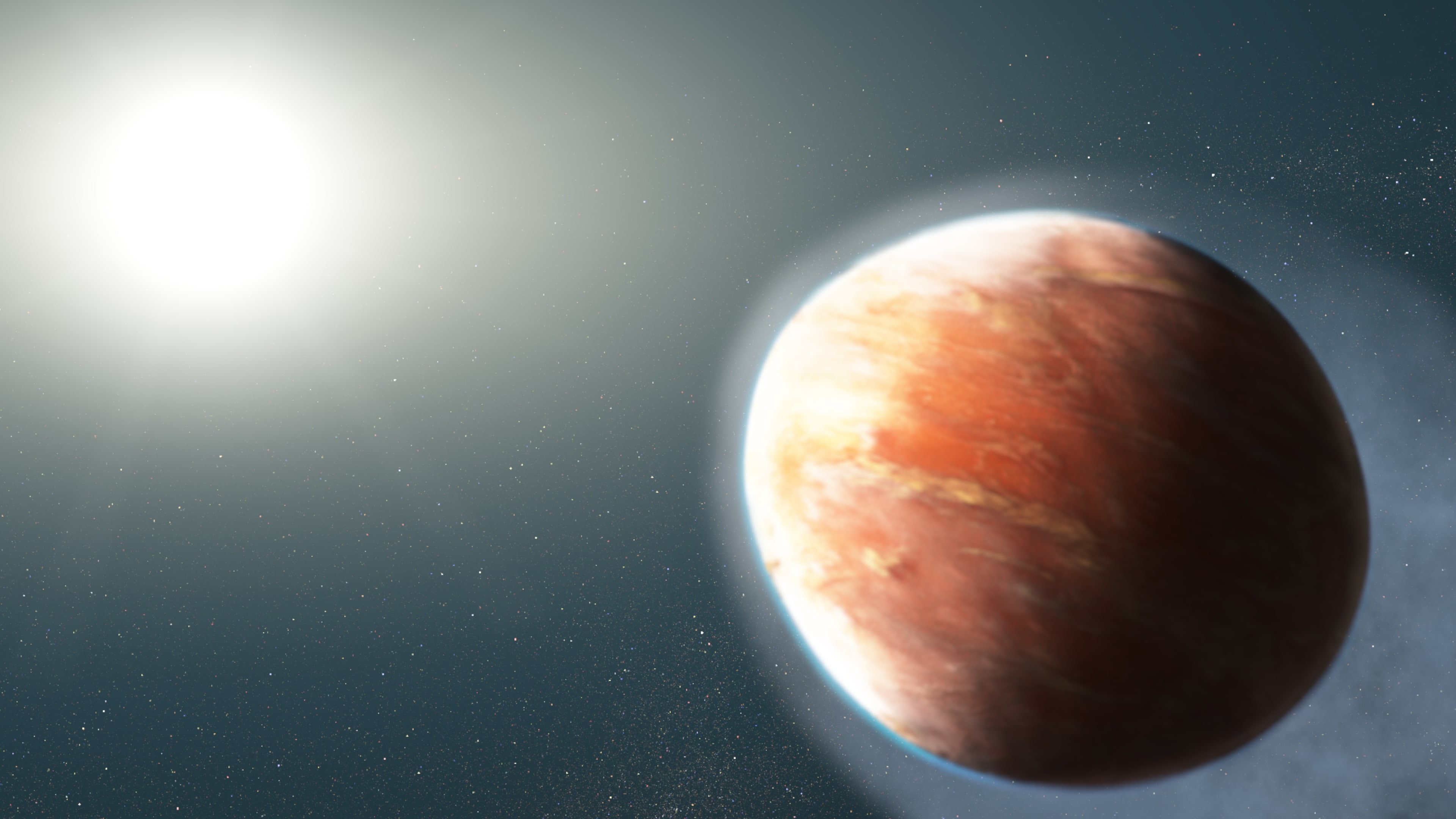
Astronomers have discovered a planet where heavy metals like magnesium and iron are being turned into gas and streaming out into space. Using the Hubble Space Telescope, they observed a planet where the metals are heated so much that instead of condensing into clouds, which is what normally happens to superheated metals, the elements are evaporating and escaping from the planet entirely.
The planet in question, WASP-121b, is located about 900 light-years from Earth. It orbits dangerously close to its star, with its atmosphere reaching a scorching 4,600 Fahrenheit, which causes the magnesium and iron from the atmosphere to boil away. The gravitational forces on the planet are so great that it is in danger of being ripped apart, and they have already formed the planet into a football shape.
The findings are important because this is the first time that astronomers have observed heavy metals escaping from a planet of this type, called a hot Jupiter. “Heavy metals have been seen in other hot Jupiters before, but only in the lower atmosphere,” lead researcher David Sing of the Johns Hopkins University explained in a statement. “So you don’t know if they are escaping or not. With WASP-121b, we see magnesium and iron gas so far away from the planet that they’re not gravitationally bound.”
Two factors contribute to this unusual finding: Firstly, the planet is large and “puffy,” meaning it has relatively weak gravity which makes it easier for the heavy metals to be stripped away. Secondly, the star around which it orbits, WASP-121, is brighter and hotter than our Sun and gives out significant ultraviolet light which heats the atmosphere. As the heavy metals rise into the atmosphere, they make it more opaque, which further contributes to the heating effect.
This shows astronomers a new mechanism through which a planet could lose its atmosphere. “The hot Jupiters are mostly made of hydrogen, and Hubble is very sensitive to hydrogen, so we know these planets can lose the gas relatively easily,” Sing said. “But in the case of WASP-121b, the hydrogen and helium gas is outflowing, almost like a river, and is dragging these metals with them. It’s a very efficient mechanism for mass loss.”




